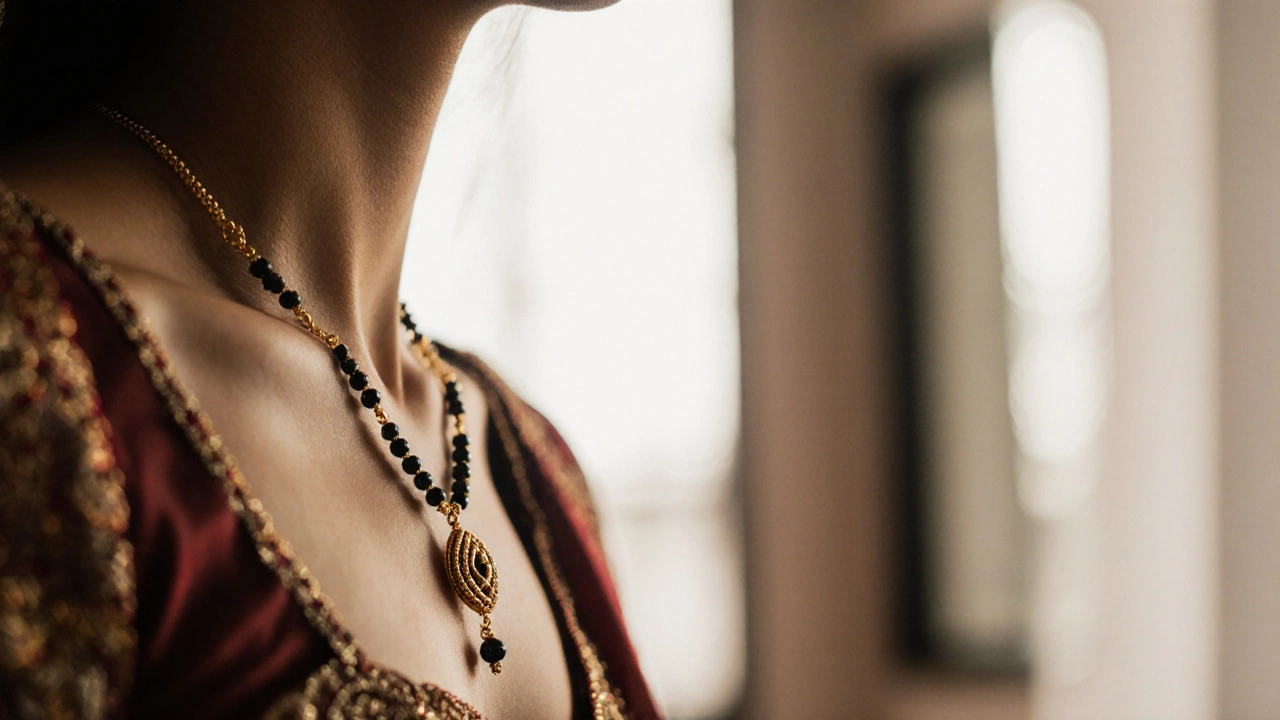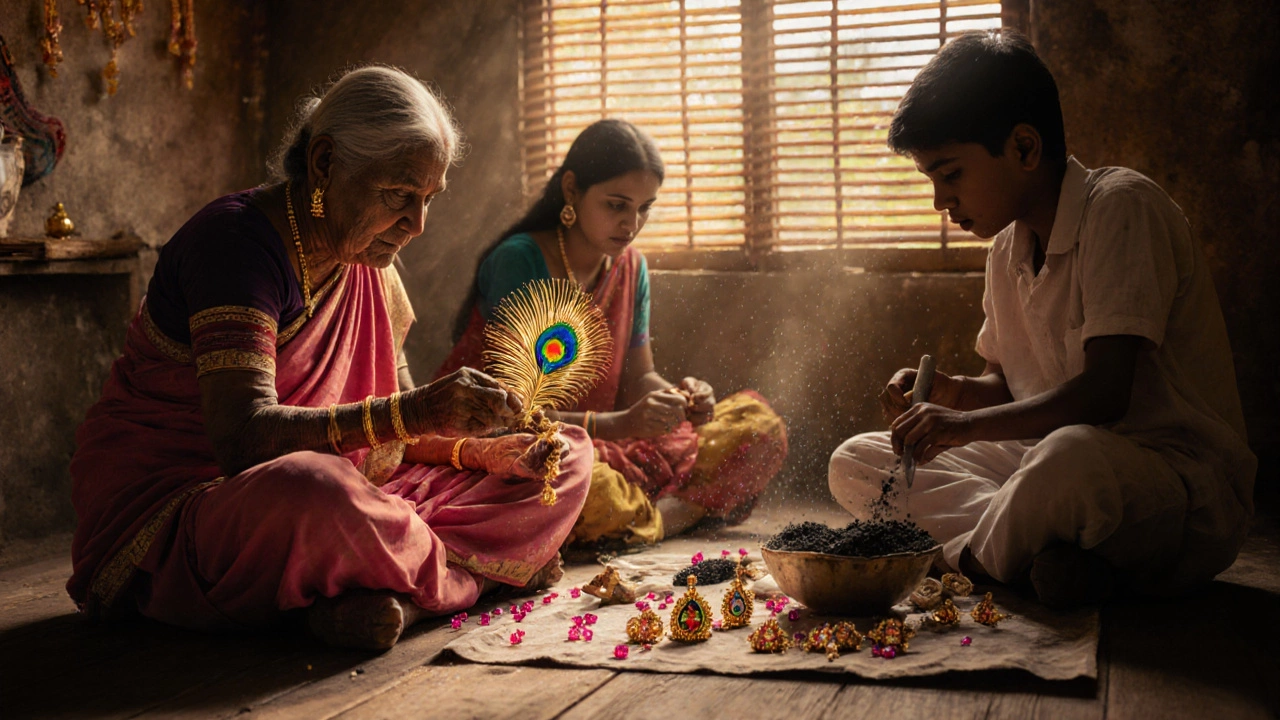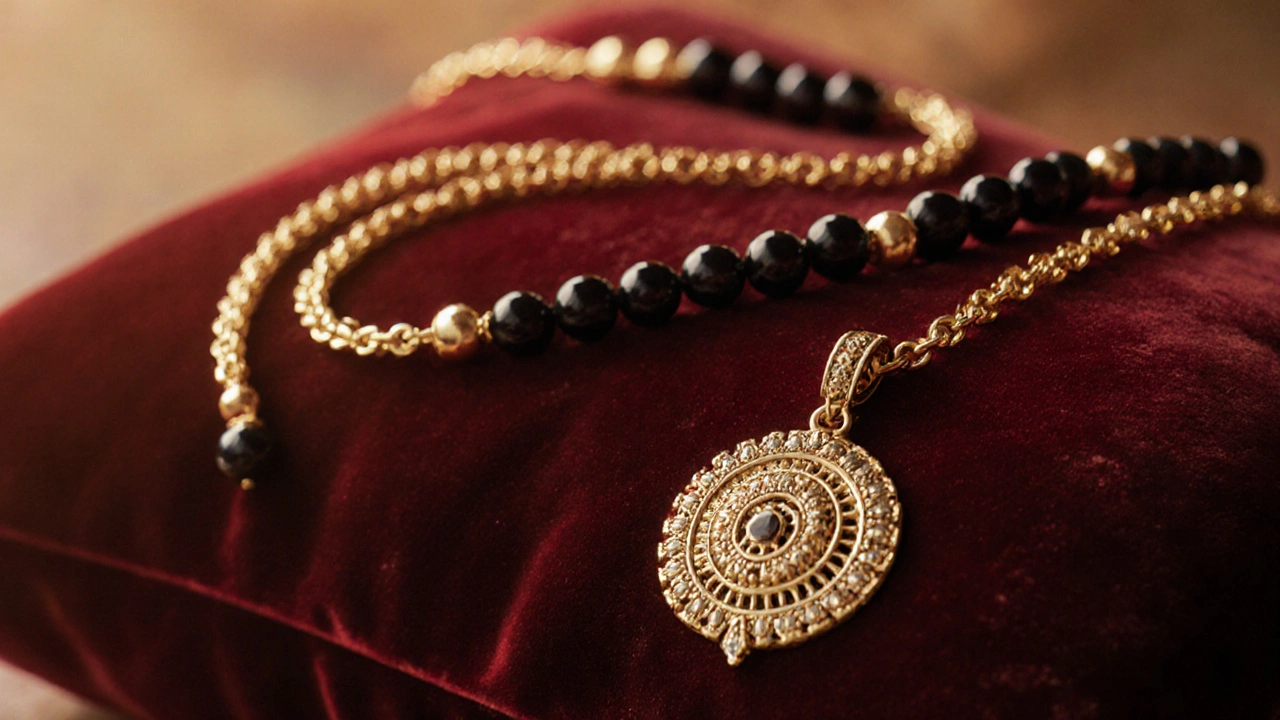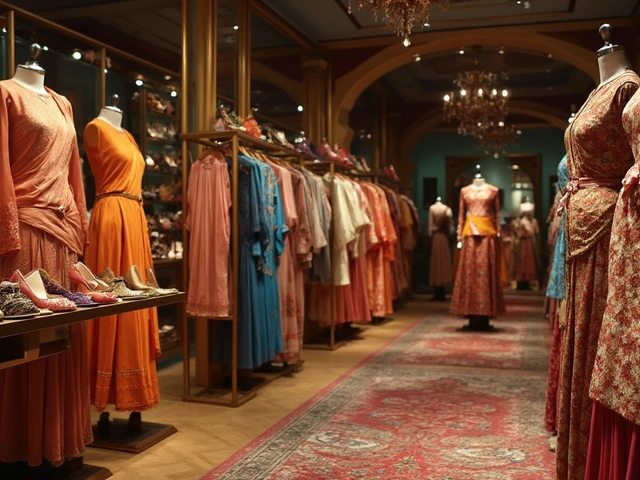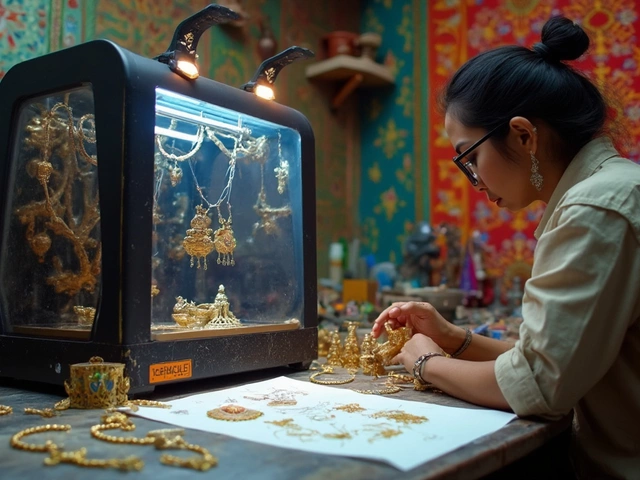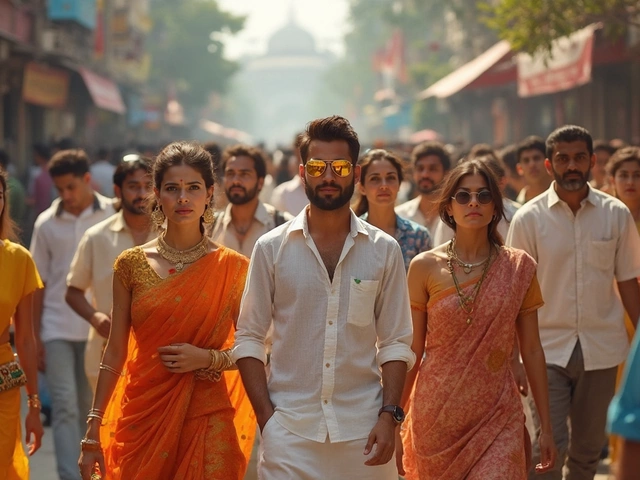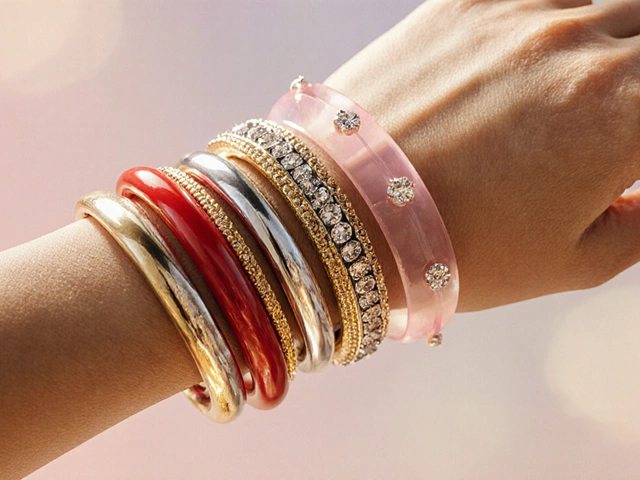Traditional Indian Jewelry: Timeless Styles and Modern Tips
When exploring Traditional Indian Jewelry, the centuries‑old craft of adorning the body with gold, silver, gemstones and intricate designs that reflect regional cultures. Also known as Indian heritage jewellery, it blends art, ritual and everyday fashion.
A key subset is Temple jewelry, sacred pieces created for deities and worn during festivals, often featuring deities, motifs and rich gemstones. Another staple is Bangles, rigid bracelets that come in colorful chooda sets and are essential for bridal and festive wear. The Mangalsutra, a marriage necklace symbolising vowed commitment, varies widely between North and South India. These pieces together form the backbone of the tradition.
Core Elements of Traditional Indian Jewelry
Material choice matters. Gold purity is commonly shown by marks like 750 (18 K) or 875 (21 K). Traditional Indian Jewelry often uses 22 K gold for bridal sets because of its deep hue and cultural value. Silver, especially sterling‑silver marked 925, appears in temple pieces and everyday bangles. Gemstones such as kundan, rubies, emeralds and pearls are set in intricate claw settings that have been passed down for generations.
Designs tell stories. A temple necklace may depict scenes from mythology, while a bangle’s color palette reflects regional festivals – red for weddings, green for Navratri. Mangalsutra designs range from simple gold chains with black beads to elaborate gold‑copper combos with intricate pendants. Understanding these attributes helps you pick pieces that match both your style and the occasion.
Craftsmanship is a skill‑heavy process. Artisans hand‑file, engrave and set stones without machines for many classic pieces. This hands‑on work influences price and resale value – a well‑crafted bangles set lasts decades, while mass‑produced imitation pieces lose shine quickly. When you spot a fine hallmark, check the weight and magnet test to confirm authenticity.
Culture shapes how and when pieces are worn. Nose pins, for example, are common across the subcontinent and carry different meanings in different states. Black beads in a mangalsutra are believed to ward off evil, while gold bangles are considered a sign of marital status. Knowing these cultural cues ensures you respect traditions while expressing personal style.
Buying tips matter. Always ask for a BIS hallmark certificate when purchasing gold, and verify the 22 K marker on temple pieces. Look for a clear vendor return policy, especially for expensive sets. If you’re buying online, request high‑resolution images of the hallmark and ask for a video showing the piece from multiple angles.
Maintenance keeps the shine alive. Gold should be cleaned with mild soap and a soft cloth; avoid harsh chemicals that can damage enamel work on temple pieces. Silver bangles need periodic polishing to prevent tarnish, and gemstone settings should be inspected for loose stones before each major event.
Resale value varies by type. Mangalsutras with pure gold and classic designs hold value better than trendy, low‑karat pieces. Temple gold with rare gemstones often appreciates, especially when it has a documented provenance. Bangles made from solid gold retain value, while plated versions lose most of their worth over time.
Regional variations add flavor. Jaipur is famed for its Kundan work, while South Indian artisans excel in intricate silver temple pieces. Knowing where a style originates helps you gauge authenticity and price expectations.
Finally, modern trends are influencing the age‑old tradition. Rose gold and mixed‑metal designs are finding a place alongside classic yellow gold, and minimalist temple pendants are becoming popular for daily wear. Keeping an eye on these trends lets you blend heritage with contemporary style.
Below you’ll find a hand‑picked collection of articles that dive deeper into each of these topics – from how to spot authentic gold hallmarks to the symbolism behind black bangles. Explore the guides to sharpen your knowledge, make smarter purchases, and enjoy the rich world of traditional Indian jewelry.
Why Are There Three Knots in Mangalsutra? The Meaning Behind the Design
The three knots in a mangalsutra symbolize commitment, family, and self-preservation in marriage. Rooted in ancient tradition, they’re more than decoration-they’re a living promise. Discover what they truly mean and how modern women are redefining their significance.
Where Do Indians Get Their Temple Jewelry From?
Temple jewelry in India comes from small workshops in Tamil Nadu and Andhra Pradesh, where artisans handcraft sacred designs passed down for centuries. It's not bought-it's inherited, made with skill, and rooted in temple traditions.
Why Black Beads Are Used in Mangalsutra - Symbolism, History & Style
Explore why black beads appear in mangalsutra, their symbolism, history, material options, and care tips. Learn to pick a meaningful design that blends tradition and style.
